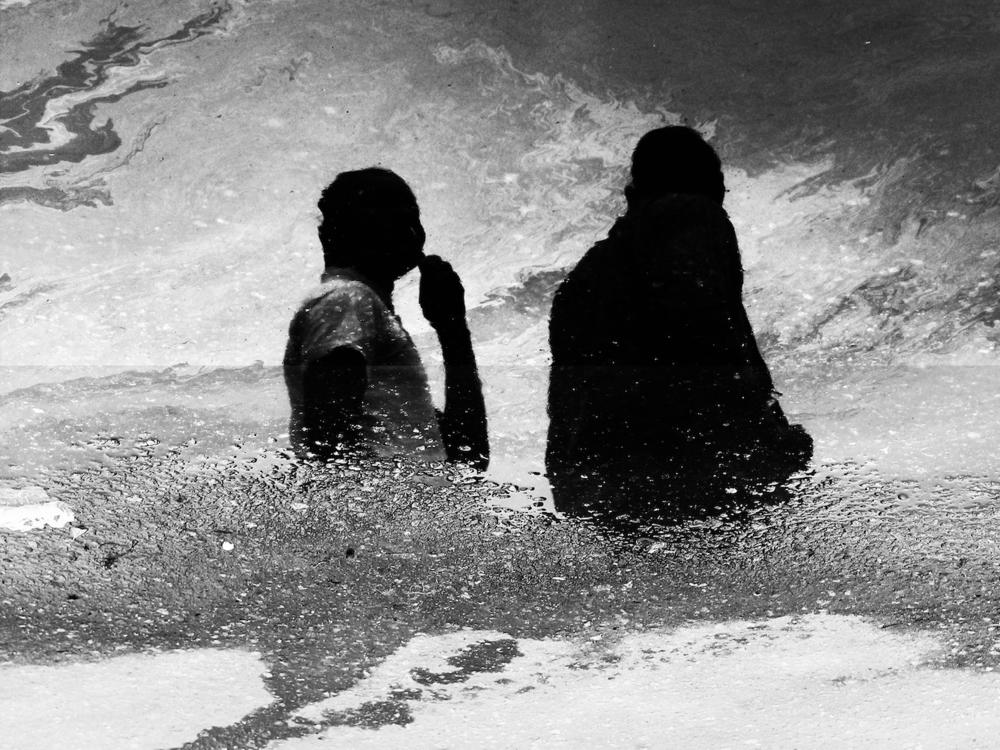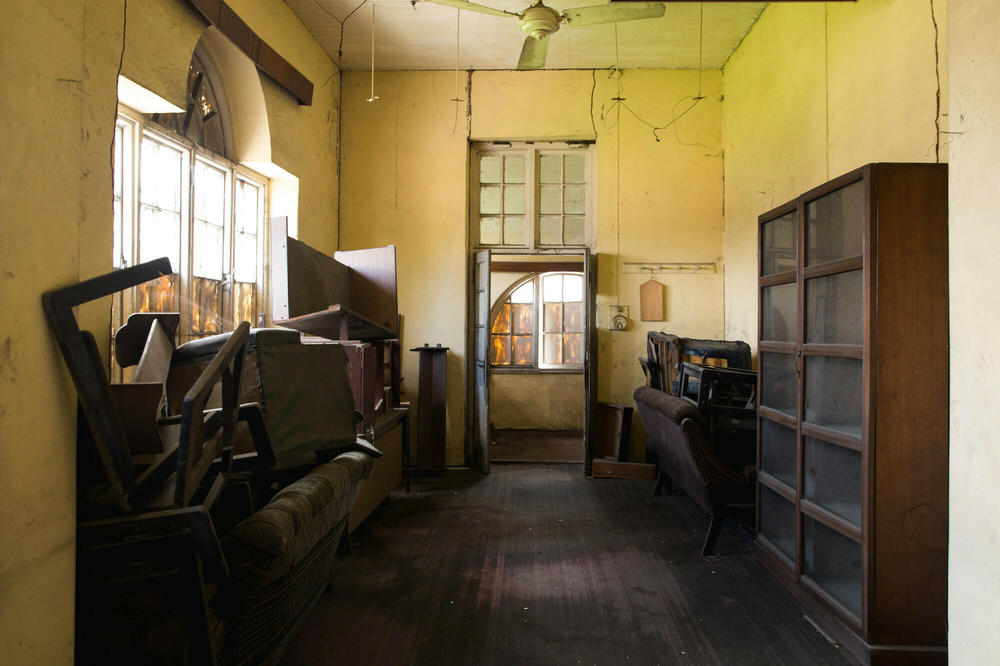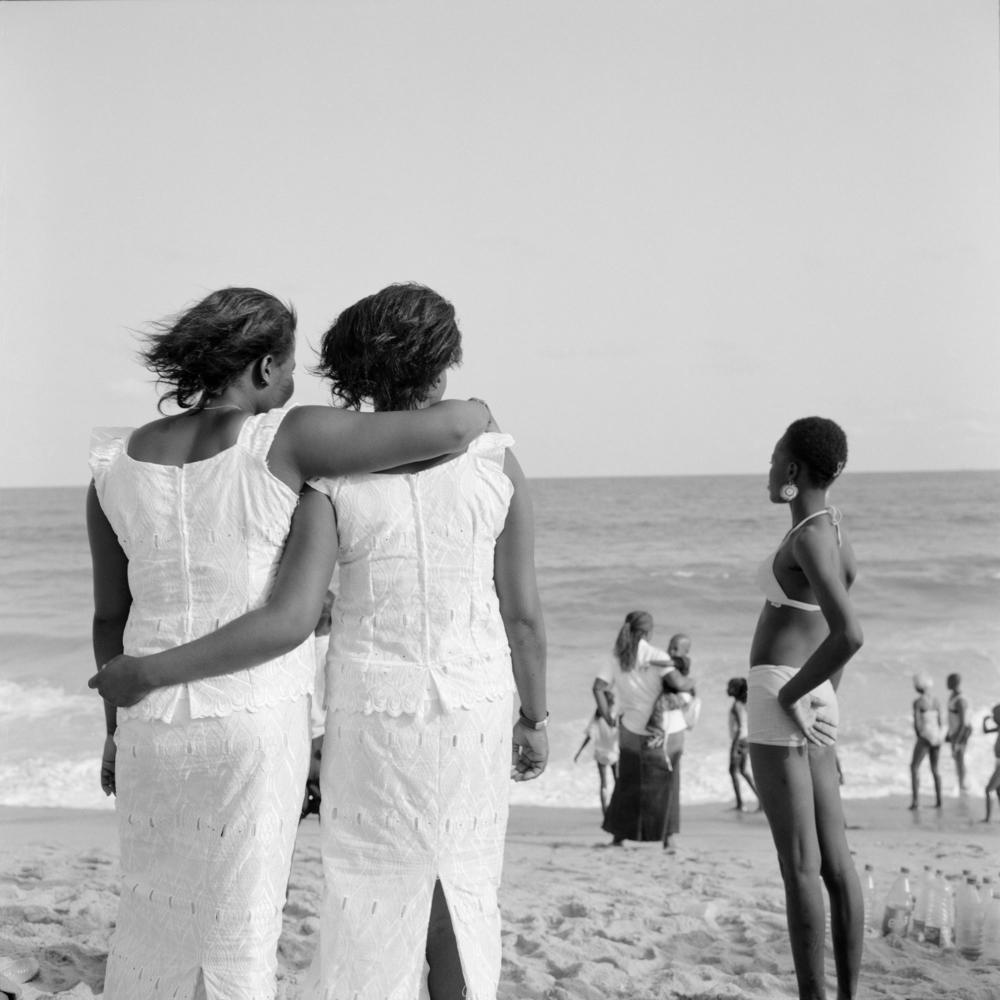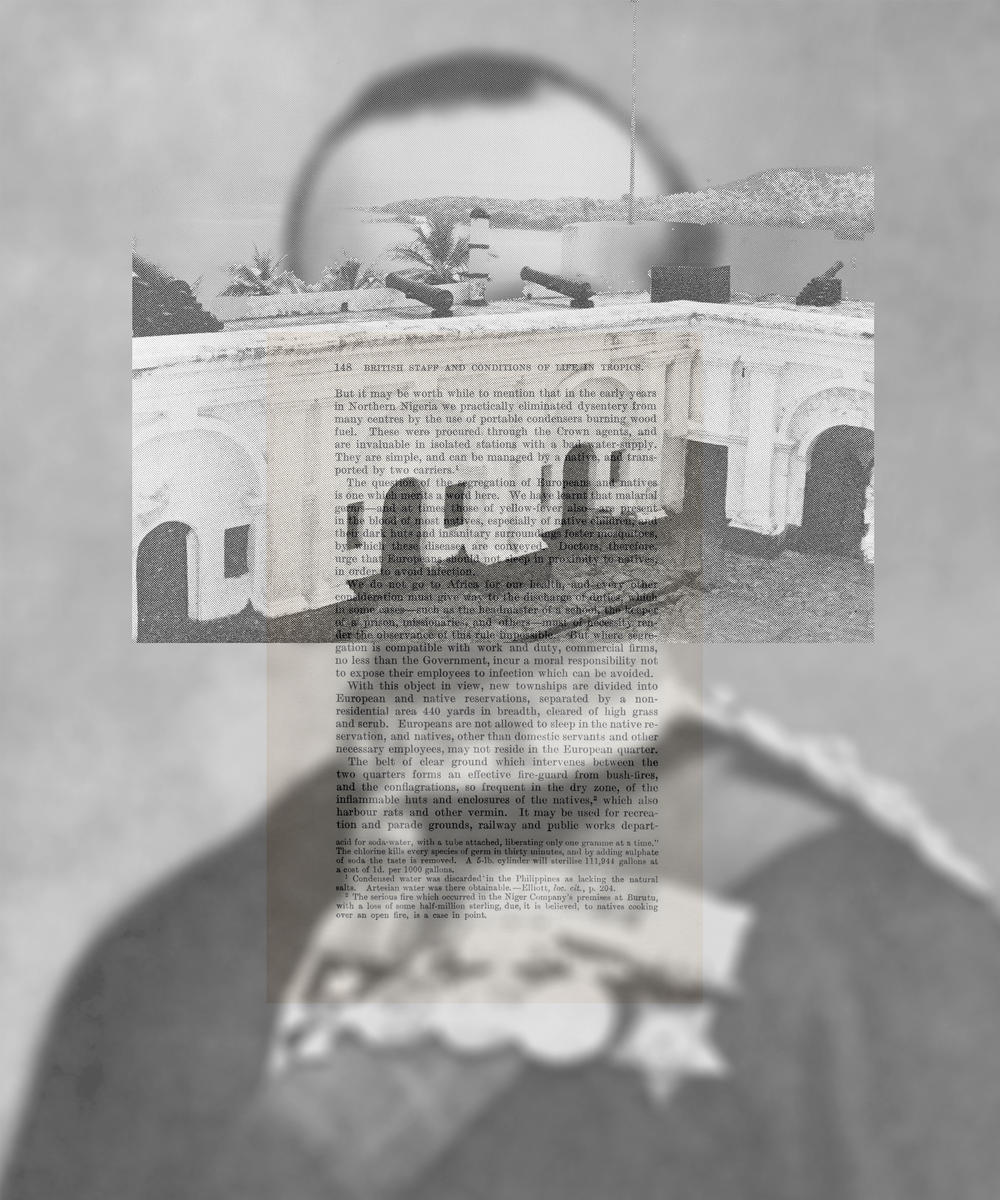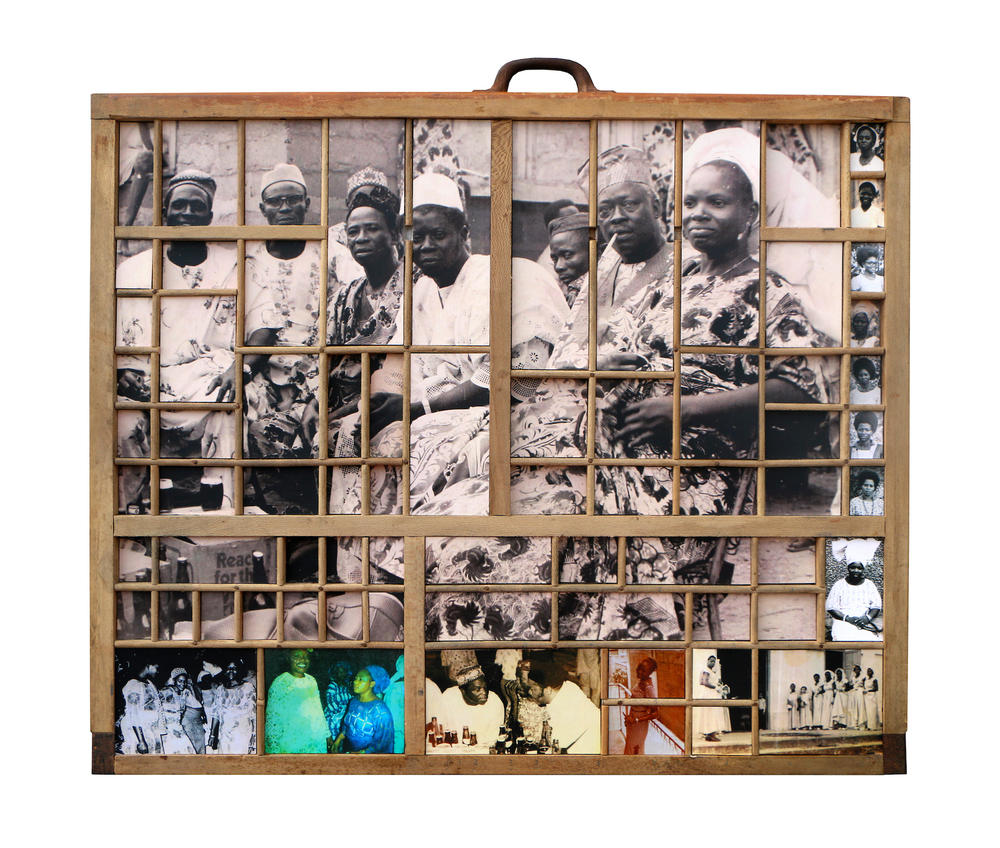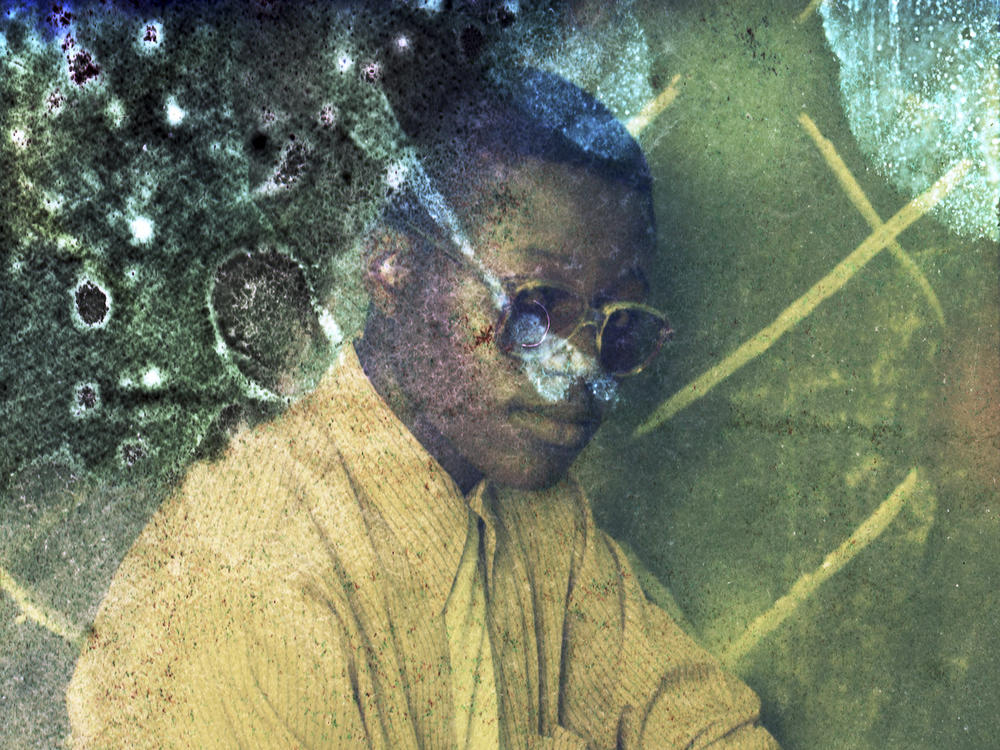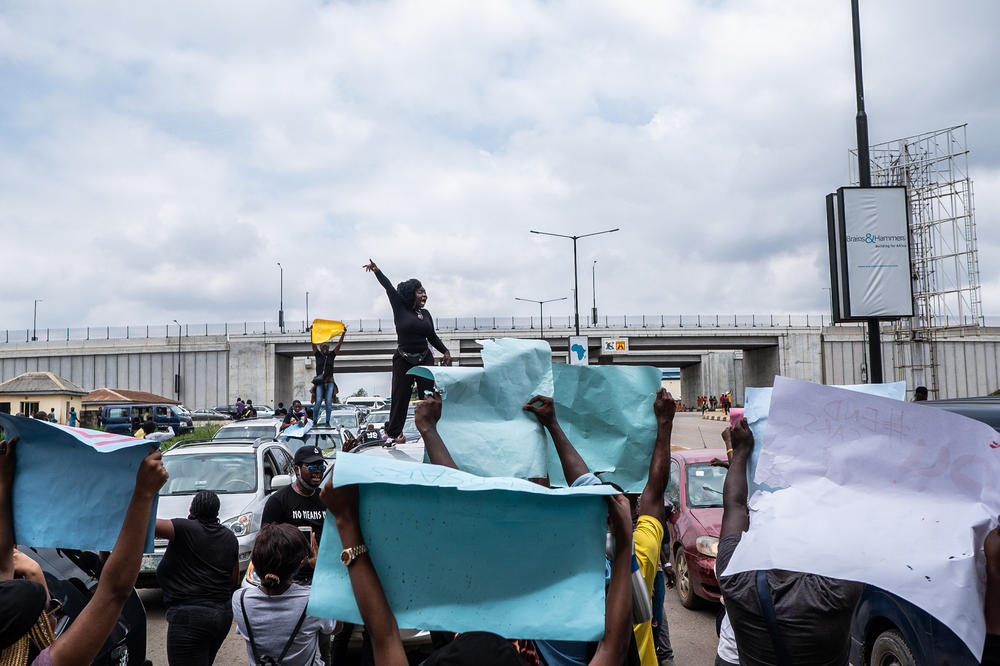Section Branding
Header Content
Unusual photos at MoMA conjure the beaches, bustle and history of Lagos
Primary Content
Updated July 29, 2023 at 11:41 AM ET
You don't expect to walk into one of the world's great art museums and hear car horns honking.
It's a soundtrack for New Photography 2023, an ambitious new exhibit of 151 works at New York's Metropolitan Museum of Modern Art (MoMA) that seeks to capture the essence of Lagos, Nigeria, the bustling home to upward of 17 million people.
The exhibit, which runs through Sept. 16, is notable for other reasons. With seven photographers represented, the exhibit marks the first time MoMA has presented a group show by living West African photographers. And it's the launch of an ongoing series of exhibits that MoMa says will focus on "specific art scenes across the globe."
Oluremi C. Onabanjo, associate curator of MoMA's department of photography, who organized the show with the assistance of curatorial fellow Kaitlin Booher, welcomes the shift to international perspectives. "Lagos until now hasn't had a home at MoMA. Why not let this be the moment of encounter?"
What you'll encounter is a compelling collage of a massive cityscape whose clogged congestive sprawl co-exists with serene waterscapes and beaches, where ultra-modern skyscrapers tower over the abandoned buildings and artifacts of the colonial past — and where as many protesters as pedestrians sometimes fill the streets.
These contrasting photos create a conversation in the three galleries. In the first gallery, for instance, the gritty, vibrant black-and-white photos of Logo Oluwamuyiwa lining one wall are pitted against Amanda Iheme's colorful photos of colonial-era buildings in decay.
Oluwamuyiwa's "Monochrome Lagos" series shows how vibrant Lagos is – and how cameras and cellphones are everywhere. One of the first images a visitor sees is iPhone, in which a stylishly dressed young woman reluctantly raises her eyes from her cell phone to meet the gaze of the photographer.
Like the sounds of honking horns that boom through the gallery, many of the photos display a cacophony of heavily trafficked streets and bridges, flowing water, hazy smoke from a nearby fire, people of all ages and classes.
There are two stacks of large-sized prints for visitors to take home as souvenirs: one a wide-angle shot of a highway bridge so uncharacteristically empty one wonders if it has been abandoned, the other a super-close-up of the back of a bus bearing a poster declaring "Lagos Hosts the World."
By contrast to Oluwamjhkwa's bustling modern urban scenes, Iheme in her series "The Way of Life explores the past that remains embedded in the present. Her large color photos portray older buildings that have fallen into states of decay and abandonment. In addition to her focus on their current neglect, the buildings she depicts share a common origin, dating to Nigeria's years under British rule, from 1851 to the country's independence in 1960.
"She is attuned to how the houses hold the traces of history and the impact of history on our beings," Onanbanjo comments. The most intriguing photo focuses on a single brownish-red brick, which Iheme, who is a psychotherapist in addition to a photograher, herself recovered from an 1846 house as it was being torn down. It had been built for an Afro-Brazilian slave-trading family and was later refitted for use as a post office, restaurant and bar.
Another photo captures shadowy stairs inside an abandoned building, a scene that evokes shadows lurking from the past. In yet another, pedestrians in Western and traditional African dress walk side by side down a street whose pavement is in visible disrepair. She also shows a sense of humor in her depiction of a grand pink building with no evidence of anyone living there 00 but with laundry drying on the outside hedges.
The next gallery emphasizes the sensual beauty of the city. In his finely detailed black-and-white series, "Sea Never Dry," Akinbode Akinbiyi conjures the sense of an unending ebb and flow of life in Lagos, which is located on a lagoon and consists of several islands famed for their beaches. Onabanjo describes this series as "photographic constellations of people, animals, and objects" found at Bar Beach on Victoria Island in Lagos. Among the most striking is a woman dressed all in white, holding a book (perhaps a Bible) as she strides alone by the surf's edge, a place where the foam from the sea and the gritty grains of sand blend one into the other.
On display nearby is what Onabanjo calls "the spectral spine of the exhibit," a series of collages that artist Abraham Oghobase, calls "Constructed Realities." The photographer juxtaposes blurrily reconfigured archival images of local African and colonial figures with legal documents and lawbook pages that spell out the racist basis of imperial rule.
The second work in the set, shows Ọba Ọvonramwen, the last king who ruled the independent Benin Kingdom, in 1897, as the British rulers to whom he has just surrendered prepare to send him into exile. "He was humiliated. You could see the leg chains, you could see the security guards," the photographer notes on the MoMA website. Oghobase uses the same historic image of Ọba Ọvonramwen in another piece in the series, but here, he says, "I've scaled it down to the point that you can't even see the leg chains ... I cut things up, scan them, digitally crop them" in order to tell the story from an African point of view.
The exhibit's final gallery further illuminates the interplay between the city's fading past and vibrant political present. Nostalgia and memory from the early decades of Nigerian independence are the dominant themes of "Casing History" by Kelani Abass and "The Archive of Becoming" by Karl Ohiri.
Abass repurposes the tools of his late father's printing trade: Thin wooden letter press cases, whose compartments were commonly used to sort out printers' letters. Abass transforms them into display cases for snapshots from the 1960s and 1970s documenting all manner of life, work and educational celebrations and milestones of people of different ages and generations. Time itself has aged the photos, giving them different shades and tints of yellow and sepia. Mixed together this way, the cases and images form a kaleidoscopic landscape of the early years of Nigerian independence, notes Onanbanjo.
Ohiri call his collage of old negatives and prints, collected from commercial photographers, "The Archive of Becoming" — a reference to the often psychedelic colors and transformations wrought by heat, humidity and time. "They are also unbelievably striking, strange, beautiful, swirling, unexpected pictures," says Onabanjo.
Ohiri's two-pronged video, "Rolling Footage" also offers a social critique, in its depiction of a Lagos community of the homeless and the disabled who are forced to construct their own makeshift vehicles — in this case, a skateboar, which is also on display — to navigate the congested streets of an indifferent-seeming city.
The exhibit closes with the photos of photojournalist Yagazie Emezi documenting Nigeria's October 2020 country-wide protest of the police brutality of the country's Special Anti-Robbery Squad (SARS). These photos document her own participation in the protests and contain "extraordinary power. They show the anger, joy and celebration inside a political movement feels like," says Onanbanjo.
In these photos, Emezi has said, "It's like the crowd breathes in and out." In the same way, visitors to the show can see, feel and hear the breath and pulse of the city of Lagos.
Diane Cole writes for many publications, including The Wall Street Journal and The Washington Post, and is book columnist for The Psychotherapy Networker. She is the author of the memoir After Great Pain: A New Life Emerges. Her website is DianeJoyceCole.com.
Copyright 2023 NPR. To see more, visit https://www.npr.org.
Correction
A previous headline incorrectly implied that Lagos is Nigeria's capital. In fact, the capital is Abuja.
